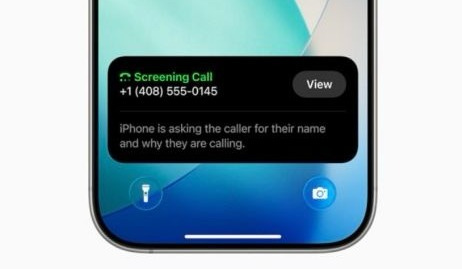How Apple Made Bad Salespeople Easier to Ignore
Outbound isn’t dead. But lazy outbound seems to be nearing end-of-life.
Author’s Note: I shared the post below on LinkedIn earlier this week, expecting a few polite nods and maybe a comment or two. Instead, it really got people talking.
The post was about my take on a new iOS feature Apple announced at WWDC—one that forces unknown callers to explain why they’re calling before your phone even rings. I argued that Apple’s new feature was more than just a clever UX tweak. It’s part of a broader pattern: every channel in my world of B2B go-to-market is getting noisier, more guarded, and harder to break into with generic outreach.
Since then, the comments on that post have been both fascinating and divided.
Some folks argued this is just a “nothing burger” for outbound. That it might even help good sellers stand out faster.
Others saw it as the latest in a string of slow-moving tectonic shifts: where the margin for error in sales and marketing keeps shrinking, and spray-and-pray is truly on its last legs.
And a few others pointed out the harder truth: great GTM can’t save bad products. If you’re selling something undifferentiated, this kind of friction is just one more headwind you won’t be able to overcome.
That mix of optimism, realism, and resignation? That’s exactly what makes this topic so interesting to me.
Below is the original short piece, including a few of my reflections on what I really think is changing and why this isn’t just about call screening. This is about the future of outbound sales - both about what you should be trying to do when you pick up the phone to call someone, and who’s going to be willing to rethink what that call is actually for.
Thanks for reading.
-Paul
Apple’s Latest Update
People are making a big deal of Apple's latest iOS update and the call and message screening features that come with it.
And they should. It's well-designed, good for consumers… and also about to make life way tougher for lazy outbound sales teams.
Here's the implication: If you can't explain in 1-2 sentences (a) why you're calling and (b) what you have that's valuable or interesting, your call is probably getting ignored.
So yes, you better have a twenty-second version of your value prop absolutely nailed. Like nailed so well that a transcript of what you're saying would land when it's spelled out on a screen (because it will be).
But while tightening up your pitch will get more important, sounding good on its own won't be enough.
Here's my prediction: As technology like Apple's becomes more commonplace, the real winners will start to treat outbound calls less like a conversion channel and more like distribution insurance.
Let me explain what I mean. A few years back, I predicted that AI's major near-term impact on the world of sales and marketing would be a flood of mediocre content across every major channel. That prediction aged well, though not enjoyably. Our LinkedIn feeds are more cluttered (and cringier). Our email is stuffed with tons of godawful AI-generated pitches. There’s more noise out there than ever before.
This noise means the old playbook (hope they open your email, hope they pick up the phone, hope they stumble across your content) isn't enough anymore. The flood of AI slop is conditioning us to ignore this stuff.
And when you risk being ignored by the customers you're hoping to attract, you need to rethink what every touchpoint is for. You need to rethink why you’re picking up the phone in the first place. You're not calling to try to sell them your product. You're calling to make sure they don't miss the thing that might actually help them.
We're starting to see this shift happen already. Smart outbound teams are becoming content concierges: instead of pitching on every touch, they're strategically using calls as delivery mechanisms and reminders to guarantee their best ideas actually get seen and don't get lost in the noise.
So if Apple's update means your connect rate gets slashed and every dial's most likely outcome is voicemail (at best)… you gotta ask yourself: How will you make that ~30 second voicemail valuable to this person? What other useful thing should it be pointing them towards? What if that voicemail worked in concert with what they're seeing in your emails, what they're discovering about you online, and what they're hearing about you from others?
What if instead of "just checking in," you were guiding them towards something genuinely helpful? Something you know they'll like?
The teams that figure this out will still need to get creative and punch through an ever-growing wall that makes it harder to get people on the phone. But they'll also start to stand out as the less creative teams default to the only move they've got: brute force.
Because when 90%+ of outreach gets ignored, breaking through won't be about trying harder to convert people with every dial.
It'll be about sending a clear, repetitive signal:
And even though your call might still get screened, that signal is very, very hard to ignore.
Salesperson or marketer curious about how to get better at outbound sales?
GTM exec trying to raise the bar on how your team does outbound?
Here’s some of my most-read stuff on that topic:




